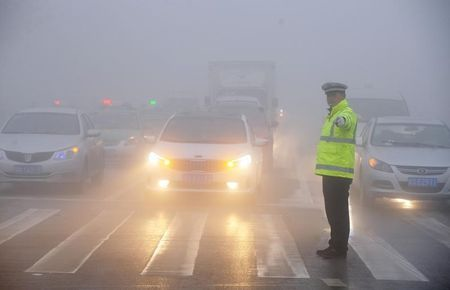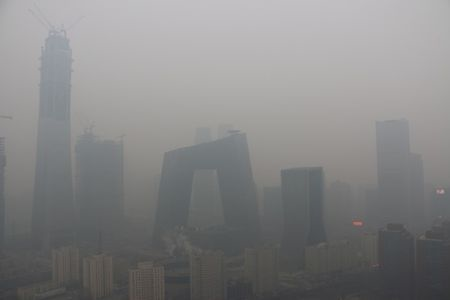

21/12/2017
Vows 30 percent cut in coal use in 2017
China's smog-hit capital Beijing plans to slash coal consumption by a further 30 percent in 2017 as part of its efforts to combat air pollution.
Beijing has promised to implement "extraordinary" measures this year in a bid to tackle choking smog from traffic congestion and the heavy use of coal.
"We will try to basically realize zero coal use in six major districts and in Beijing's southern plain areas this year. Beijing would also eliminate small coal-fired boilers. The new cuts will bring coal use in the city to less than 7 million tonnes in 2017, Beijing Major Cai said.
Beijing originally aimed to bring coal consumption to below 10 million tonnes this year, down from around 22 million tonnes in 2013, and has already shut major coal-fired power stations.
It has made up the supply shortfall by importing power from neighboring provinces via the grid, raising fears that the capital is exporting its pollution to surrounding regions.
 |
| A traffic police works among heavy smog during a polluted day in 2017. |
Bans high-emission vehicles
Beijing would also take 300,000 obsolete vehicles off the roads this year to help to raise fuel standards and promote new energy cars. Heavy traffic is responsible for about a third of Beijing's total emissions of harmful breathable particles known as PM2.5, according to the Ministry of Environmental Protection.
 |
| Buildings are seen in smog during a polluted day in Beijing. (Picture taken January 26, 2017) |
Gasoline-powered vehicles that fail to meet China's Emission Standard III will not be allowed to enter the city's main districts on weekdays, and drivers will be fined if they fail to comply,
Beijing was one of 24 cities to issue a smog "red alert" at the end of last year, allowing authorities to impose emergency restrictions on traffic and industrial output in order to reduce emissions.
The 5.7 million vehicles on Beijing's roads account for 31 percent of the city's hazardous breathable particles known as PM2.5, a major constituent of smog. Cars are also estimated to be responsible for more than 80 percent of the carbon monoxide in China's air.
China has drawn up new rules requiring all light vehicles to adhere by 2020 to its strictest "China VI" emission standards, which are based on ones used in Europe and the United States.
China's cities need to reduce PM 2.5 to an annual average of 35 micrograms in order to meet state standards. Average concentrations of PM2.5 in Beijing stood at 73 micrograms per cubic meter in 2016, down 9.9 percent on the previous year. However, readings have regularly exceeded 500 micrograms since mid-December, with fireworks to help celebrate the Chinese new year driving PM2.5 concentrations to their second highest level in five years at the end of January.
China is also considering tough new measures restricting industrial activity in the region surrounding Beijing, according to a draft policy document■
Hoàng Dương/VEM